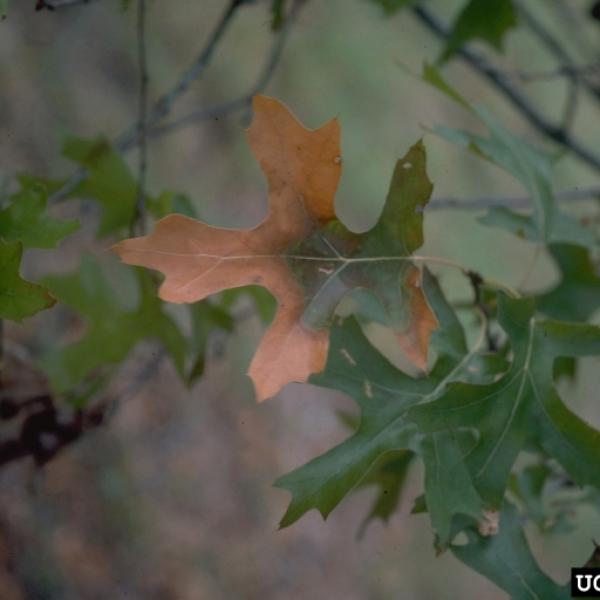
News Source
The connection between forest health and urban forestry is apparent in the management of oak wilt, a serious disease that kills thousands of trees per year. NYSDEC Forest Health has adopted a rapid response to this disease in order to prevent the establishment of oak wilt. This rapid response seeks to prevent the need to spend millions of dollars a year to control oak wilt and to prevent the loss of millions of dollars in oak wood sales in the state. Management is also critical to protect the intrinsic value of trees in urban forests, as trees improve everyone’s quality of life.
Proper management of oak wilt will not be possible without the collaboration and cooperation of stakeholders. Town officials, green professionals, homeowners, and extension offices have been integral players in detecting and managing oak wilt. Collaboration with the Town of Islip is a great example of a NY municipality stepping in to properly dispose of infected materials and to provide outreach when necessary.
To prevent the spread of oak wilt, DEC has determined best management practices to be followed. Plan to prune oak trees only from October-February. This avoids wounding oak trees during the time nitidulid beetles, which spread oak wilt, are active. Pruning wounds from March-September attract the beetles, which may have spores from diseased trees on them. These beetles initiate new infection centers by carrying the disease for miles and then feeding on new wounds of healthy trees. Beetles can be attracted to a tree wound within minutes. They can carry this disease several miles—or more if infected oak wood is moved by humans. Additional benefits of pruning during October-February include increased pruner efficiency due to better visibility of branches and a healthier response to wounding from the tree. If an oak tree is wounded when beetles are active, such as by storm damage, wound dressing is recommended as a barrier to disease transmission infestation by the beetles.
Urban forests remind us that our interaction with each other and the natural environment greatly impact tree health and our forests. To help prevent the spread of oak wilt, DEC is asking for adherence to regulations put in place in protective zones surrounding infections.
NYSDEC has resources available for green professionals, upon whom we are relying to help manage oak wilt. Please visit NYSDEC’s oak wilt page and factsheet for more information.
Photo credit: Paul A. Mistretta, USDA Forest Service, Bugwood.org.